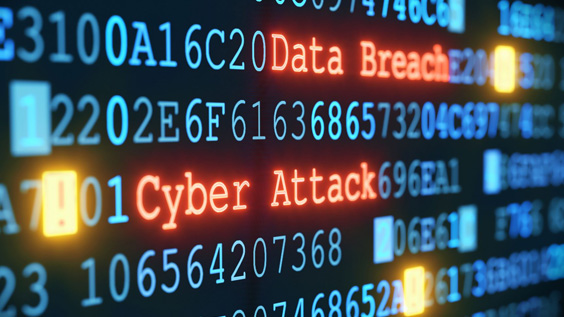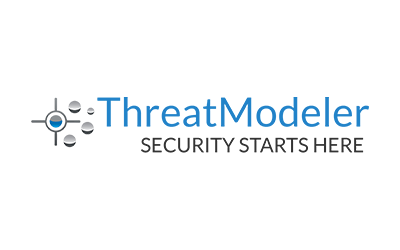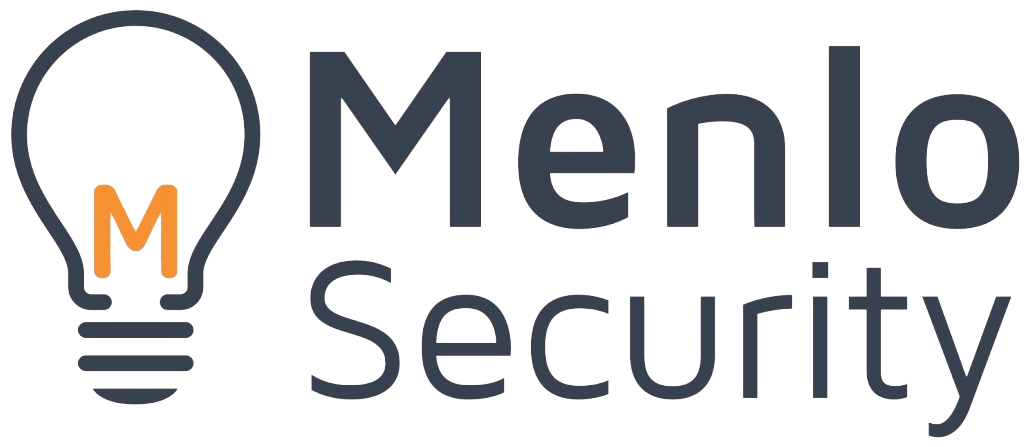Director of Threat Management Services,
IBM Security
Upcoming Summits
Upcoming Summits
For Executives in the Greater Dallas Area
Thursday,
May 13, 2021
8:00AM - 6:30PM CDT
Contact Samantha@CyberSummitUSA.com
or call 212.655.4505 ext. 247
If you run into any issues registering, please try using a different browser.
The Sixth Annual Dallas Cyber Security Summit goes virtual as it connects C-Suite & Senior Executives responsible for protecting their companies’ critical infrastructures with innovative solution providers and renowned information security experts. Admission is just $95 giving you access to all Keynote Discussions, Interactive Panels and Product Demonstrations.
With full day attendance, you will earn 8 CPE/CEU Credits!

Insider Threats
Identifying & avoiding breaches and how remote work has impacted Insider Threats in today’s remote workforce age

The Future of Cloud Security
Best practices to mitigate cloud security threats and ways to minimize common misconfiguration errors

Ransomware on the Rise
Utilizing zero trust to avoid becoming a hostage to cyber criminals and what to do if you fall victim to an attack
Learn
Our conferences have been rated as one of The Top 50 Must Attend Conferences for the last 3 years. Learn from renowned experts from around the globe on how to protect & defend your business from cyber attacks during interactive Panels & Fast Track Discussions.
Evaluate Demonstrations
Evaluate & See demonstrations from dozens of cutting-edge solution providers that can best protect your enterprise from the latest threats.
Comfort & Safety
Many senior executives simply don’t have the time to travel for up to a week to the large cyber trade shows. Our mission is to bring the Cyber Summit experience to the executives from the comfort and safety of your own home. Our events are always for just one day only.
Engage, Network, Socialize & Share
Engage, Network, Socialize & Share with hundreds of fellow Powerful Business Leaders, C-Suite Executives & Entrepreneurs.
CEUs / CPE Credits
By attending a full day at the Cyber Security Summit, you will receive a certificate granting you 8 Continuing Education Units or Continuing Professional Education Credits. To earn these credits you must participate for the entire summit & confirm your attendance at the end of the day.
Investment
By investing one day at the summit, you may save your company millions of dollars, avoid stock devaluation and potential litigation.
Atmosphere
Each Cyber Security Summit is “By Invitation Only” and all attendees are pre-screened & approved in advance. Attendance is limited to approx. 300 Sr. Level Executives to maintain an intimate, non-trade show like environment.
Reality Check
Did Under Armour, Facebook, Equifax, Yahoo, Blue Cross / Blue Shield, Sony, Target and thousands of other businesses that were hacked do everything within their power to avoid being victimized? Is your company next? Learn the latest defensive measures at the Cyber Security Summit from your peers and from thought leaders in the industry.
QUESTIONS
For any questions, please contact Samantha@CyberSummitUSA.com or call 212.655.4505 ext. 225
SPONSOR
To sponsor, speak or exhibit at an upcoming summit, contact BRand@CyberSecuritySummit.com or call 212.655.4505 ext. 223
This educational and informational forum will focus on educating attendees on how to best protect highly vulnerable business applications and critical infrastructure. Attendees will have the opportunity to meet the nation’s leading solution providers and discover the latest products and services for enterprise cyber defense.
8:00-8:30

8:30-9:15

Justin Fier
Director of Cyber Intelligence & Analytics
Darktrace
Our digital environments and workforces are more dynamic than ever. To navigate the risks and challenges that digital innovation brings, organizations must rethink their approach to security. Static, legacy approaches have become redundant against sophisticated, fast-moving threats, and attackers that continue to evolve their techniques. Organizations are increasingly turning to new technologies like AI to achieve much-needed adaptability and resilience; protecting workforces and data from attack by detecting, investigating and responding to cyber-threats in real time — wherever they strike.
9:15-9:40

Every organization gets compromised – it’s how you fast you detect and respond to an incident that counts. This is especially important when you look at trends like the overnight move to remote work, the rise in encrypted traffic and acceleration of cloud adoption, as well as the proliferation of enterprise IoT that have expanded the attack surface and complicated the job of security professionals. We’ll explore those trends and the opportunity that lay ahead for security teams post-compromise to prevent an event that results in an outage or an incident from becoming a full-scale data breach.
9:40-9:55

More and more organizations are moving workloads to the cloud in hopes of increased flexibility and agility. However, this seems to come with increased complexity in the daily operations of traditional network and security professionals. Migration of traditional applications to the public cloud and the development of cloud-native applications further fragments already complicated infrastructures. Traditional security and network teams must work together with those in charge of cloud operations to secure access and connectivity across multiple security controls. The centralization of security policies offers visibility and control into these complex hybrid environments, ensuring security while maintaining business agility.
9:55-10:20

Paul Martini
CEO, Co-Founder & Chief Architect
iboss
Secured Access Service Edge, or SASE, is no longer a buzzword tossed around by cybersecurity pundits but is a robust, cloud-based service model to enable secure anywhere, anytime access from any device.
In the Are you SASE Ready? 5 Steps for Building Your SASE Roadmap webcast, you will learn how to build a roadmap to move to SASE and the benefits such a move will offer.
The session will cover how SASE will provide your organization with a path to reducing network and security cost and complexity while increasing security and connectivity to give your users a better experience, regardless of location.
In this session, Paul Martini, CEO, CTO & Co-founder at iboss, will discuss:
10:20-11:10
Mary Balogun Sean Brehm Anya Vysotskaya Romanus Prabhu Andy Stone Rich Bakos Josh Bregman
Lead, Dallas Chapter
Women’s Society of Cyberjutsu
MODERATOR
Co-founder
Crowdpoint
Sr. Analyst II
Flashpoint
Head of Global Support
ManageEngine UEM
CTO - Americas
Pure Storage
Sales Engineering Director
LogRhythm
Chief Operating Officer
CyGlass
In 2020, there was an unprecedented growth in ransomware attacks and this trend shows no signs of slowing down. Rather, these attacks are evolving and becoming more harmful as cyber criminals become more organized and effective. It is predicted that in 2021, businesses will fall victim to a ransomware attack every 11 seconds with an estimated cost of over $20 billion – 57 times more than in 2015, making ransomware the fastest growing type of cybercrime.
As a result, companies are transitioning from the traditional “trust but verify” method and implementing a Zero Trust model, requiring all users to be authenticated and continually authorized in order to be granted access and maintain access to company data and applications. By leveraging various technologies & techniques such as multifactor authentication, IAM, least privilege access, and microsegmentation, the Zero Trust model reduces the risk of a ransomware attack and minimizes the potential damage from a breach.
This panel will highlight where enterprises are most vulnerable to becoming a victim of ransomware and how utilizing a Zero Trust model minimizes this risk. Industry experts will discuss best practices to avoid a ransomware attack including adapting the Zero Trust model, what to do if your company is being held for ransom, ways to mitigate the damage caused by an attack, and how to recover afterwards.
11:10-11:35

John Velisaris
Director of Threat Management Services
IBM Security
As security and IT teams support the disparate tools, resources and infrastructure required to enable organizations to securely move to the cloud, innovate, compete and grow, they face the challenge of establishing centralized visibility, detection and control over this fragmented, multifaceted environment with many owners.
Join this session to hear how by focusing in on the four main areas of Distributed Operations, AI Driven Analytics, Just In Time Expertise and Automation, you can create a unified SOC, from many dispersed components and personnel, that can operate as one high functioning effective unit.
11:35-12:00

George Avetisov
CEO & Cofounder
HYPR
With the Passwordless Decade well underway, more and more organizations are asking the question: Why is now the right time to move beyond passwords?
George Avetisov, CEO of HYPR, will discuss the rise of organizations moving to the cloud, how the perimeter fades and the attack surface gets larger. Modern tools such as SNIPR and Modlishka make it easier for hackers to launch large-scale automated attacks, bringing credential re-use and two-factor-authentication attacks to record highs.
How did we get here, and will mainstream adoption of passwordless security have an impact? We will explore how the rise of virtual desktop infrastructure and a remote workforce has affected workstation login and review how the evolution of authentication has impacted organizations’ identity and access management systems.
In this session, you’ll learn:
12:00-12:25

Stuart Winter-Tear
Director of Strategy and Solutions
ThreatModeler Software, Inc
The move to cloud poses unique challenges as organizations adapt to securing infrastructure as code for all applications while being prepared to secure brave new features such as containers, microservices and automatic scaling. Deploying all your infrastructure as code with security built-in is a challenge. Teams must consistently conform to established standards operating in the cloud environment and enforce these standards through processes such as automated checking and automated compliance testing.
“As we’ve all learned throughout the years, good compliance doesn’t always equal good security, but good security usually means easy compliance.”
– Tom Holodnik, Intuit
Paradigm Shift in Cloud Security – AWS ProServe and ThreatModeler Joint Offering
To scale secure migrations to the cloud, AWS ProServe and ThreatModeler have designed a 30-day accelerated program. This joint offering (Automated Threat Modeling) enables a self-service model to scale secure Cloud Development Life Cycles (CDLCs) by automatically converting an architecture diagram into a threat model and recommend the controls required to secure the attack surface. Automated Threat Modeling analyzes the live AWS service environment to validate the security controls, ensuring all the threats have been mitigated. Even developers with little or no knowledge of security can build their AWS environment securely.

12:25-12:50
Track ASam McLane
Chief Technical Services Officer
Arctic Wolf
It is important to recognize that, overall, the industry has an effectiveness problem. The escalation in threat activity and the talents shortage in the industry has created a situation where, despite lots of products and cybersecurity spend, we aren’t getting better protection. To put a finer point on it, there are over 3,000 vendors selling products in the industry. The total spend last year was $120B+ and even with all of that there we almost 4,000 breaches — a 96% increase over the previous year. The key takeaway from these breaches is that they are NOT product failures. They are operational failures. To prevent these kinds of breaches from happening again in the future, we believe, the industry needs to adopt a new approach – an operational approach – to cybersecurity.

12:25-12:50
Track BJannine A. Mahone, MBA, CISSP
Product Marketing
Skybox Security
Wagons, bandits, gun smoke, chewing tobacco. Who doesn’t like a good Western movie? Today’s cyber landscape with its sophisticated bandits and data being held ransom is the modern “wild west”. While the security community has made vast strides in innovating tools to secure corporate infrastructure, the breaches of this decade have shown that we still have a long way to go. Decades-old techniques of scanning for vulnerabilities and patching by volume are unable to tame the volume of vulnerabilities being discovered daily.
Jannine Mahone, Sr. Manager with Skybox Security will discuss the history of vulnerability management, the techniques and tools that have become staples in our modern-day arsenal and the coming of age that will dramatically impact the war on cybercrime.
Topics covered in this session:

12:50-1:15
Track AAndrew Homer
VP Business and Corporate Development
Morphisec

12:50-1:15
Track BNathan Wenzler
Chief Security Strategist
Tenable, Inc.

1:15-1:40
Track AShai Toren
CEO & Co-founder
JetPatch
The everlasting project. No matter what you do, how many days and nights you spend trying to cope with the endless vulnerabilities that keep on piling up, all the automation tools you buy, and all efforts you invest – you will never win. In this session, Shai Toren, CEO of JetPatch, will showcase an innovative approach to solving the long-lasting challenges of patch management – a fundamental problem striving for a modern solution. Using an analogy taken from the hospital ER, he will explain why the current legacy patching solutions failed miserably and how machine-learning technology and hyper-automation transform the way patching should be done – with zero-touch – allowing systems to self-heal and remediate.

1:15-1:40
Track BJames Christiansen
CSO VP, Cloud Security Transformation
Netskope
Most organizations have a hybrid implementation of cloud and on-prem services. With the rapid adoption of business digitalization and expanding remote workforce, how do we consolidate controls and enhance the security of the systems?
In this hybrid mode, enterprises need speed, visibility, security, and reliability without compromise. Enter the secure access service edge, better known as SASE. It’s inevitable that SASE implementations and Zero Trust implementations will provide a more comprehensive security capability to truly support digital transformation. How can your organization best position itself for the transition?
In this session, James Christianson will discuss:
· How to migrate your security controls to take advantage of SASE
· Reducing cost while increasing your security posture
· Implementing a road map for SASE / Zero Trust
1:40-2:25
Mike Rochelle Allan Liska Ryan Kalember Grant Asplund Jeff Raymond J. Wolfgang Goerlich Michael Hughes Willy Fabritius
Founding President
ABTP
MODERATOR
Solutions Architect
Recorded Future
EVP, Cybersecurity Strategy
Proofpoint Inc.
Chief Cyber Security Evangelist
Check Point Software Technologies
Senior Solutions Engineer
Avanan
Advisory CISO
Duo Security, now part of Cisco
Chief Business Officer
Unbound Security
Global Head of Information Security, Privacy, and Business Continuity
BSI
Over the past few years, the number of organizations that have adopted cloud-based systems has grown exponentially, largely due to the COVID-19 pandemic. In turn, cloud security has become a critical issue for IT security executives and their teams. McAffee reported an increase of 630% in attacks by external actors targeting cloud services between January and April of 2020. This uptick in cloud security breaches is projected to persist even after the pandemic as many companies continue to utilize the cloud and leverage its benefits.
While migrating to the cloud offers numerous advantages, it also poses certain threats and challenges. In a recent report by Oracle & KPMG, over 90% of IT Professionals felt their organization had a cloud security readiness gap. A significant concern for many who are adapting to a cloud-based workforce is misconfigurations and gaps in cloud security programs. Additionally, cloud-based infrastructure requires adopting new security policies and processes. Many companies believe their existing security teams lack the necessary skillsets and knowledge that the cloud environment requires, especially as organizations turn to multi-cloud, hybrid cloud, and distributed cloud models.
This panel will highlight the areas where cloud systems can leave enterprises vulnerable, ways to minimize common misconfiguration errors, and other best practices to mitigate threats when migrating to the cloud. Our lineup of Industry Experts will provide their expertise on developing a robust cloud security strategy that addresses these issues and insight on how to stay secure in the future of cloud security.
2:25-2:50

Jack Miller
Sr. Director of Professional Services
Menlo Security
Zero Trust Security is an urgent priority for organizations with a vested interest in data security. But CISOs everywhere are struggling to find the best solution to enable Zero Trust measures without imposing restrictions and burdens on end-users or compromising their security stack.
The current web, email and end-point security solutions are not sufficient to address the exponential growth and advancement of cyber threats. However, a disruptive solution utilizing isolation can provide 100% malware-free email and web browsing in a non-disruptive, scalable manner. YES – 100%. Join this session to learn more about the changing future of using SASE service models to achieve Zero Trust Security.
2:50-2:55
Meet & Engage with fellow Business Leaders, Cyber Experts, Government Officials & Thought Leaders.
By meeting with each Solution Provider, you will be automatically entered to win one of ten $100 Amazon gift cards!
2:55-3:20

Danelle Au
Chief Strategy Officer
Ordr
For many years now, enterprises have seen an explosive rise in connected devices, from traditional IT devices like servers, workstations and PCs to new and more vulnerable IoT, IoMT, and OT like building systems, medical equipment and manufacturing machines. This myriad of devices from different manufacturers, operating systems and protocols expand the attack surface. IoT, IoMT, and OT bring their own challenges as they are typically not designed with security in mind. The bad news? Security teams are still responsible for all of them. It’s time for a modern approach. In this session, Ordr’s Chief Strategy Officer Danelle Au outlines why connected device security should be on your security initiatives in 2021, and presents a framework that starts with real-time asset inventory and ends with scalable security. Learn best practices and implementation considerations for device discovery, profiling and segmentation as you start your connected device security journey.
3:20-3:45

Michael Kaczmarek
VP Product Management, Security Solutions
Neustar
When you hear “ransom attack” you probably think of ransomware – the malware that can encrypt or block files or entire systems until you pay the attacker to restore access. But there’s been a massive surge in a virulent new type of ransom attack. And the defenses you’ve established to fight ransomware won’t help defeat this new threat, because it doesn’t require malware. Instead, the extortionists simply threaten to shut down your network with a massive Distributed Denial of Service (DDoS) attack at a specified day and time – unless you pay.
Attend this session to learn:
3:45-4:30
Kristin Judge Dave Brancato Tyler Shields Christopher Morales Scott Giordano Tommy Todd Ray Espinoza David Swift
CEO/President
Cybercrime Support Network
MODERATOR
Director Technical Marketing
Venafi
Chief Marketing Officer
JupiterOne
CISO and Head of Security Strategy
Netenrich
V.P., Data Protection
Spirion
Vice President of Security
Code42
CISO
Cobalt
Director of Partner Enablement
Securonix
Insider Threat has become increasingly problematic to businesses as the frequency and cost of these threats have risen over the last several years. In a global study conducted by Ponemon Institute in September of 2019, there was a 31% increase in overall cost of Insider Threat and a 47% increase in the total number of Insider Incidents from 2018.
Today, Insider Threat poses an even greater risk to businesses in the wake of the COVID-19 pandemic. Forrester Research, Inc. reported that in 2020, a quarter of all security breaches were caused by an insider and estimates that in 2021, Insider Threats will account for 33% of security breaches.
This panel will discuss the various factors that contribute to this increase in Insider breaches, how remote work has impacted the malicious & non-malicious Insider Threats facing businesses, and the implications this has on enterprises today. Our lineup of Industry Experts will offer their insight & provide best-practices on how businesses and their IT Security Teams should address these risks and adapt in order to defend against Insider Threats.
4:30-4:55

Will Kapcio
Security Solutions Engineer
HackerOne
Key takeaways
1. How organizations collaborate with hackers
2. How bug bounty data insights empower development teams
3. How companies like Spotify are keeping their applications secure
4:55-5:20

Ian Pratt
Global Head of Security for Personal Systems
HP Inc.
Users can be induced to click on malicious content through fear, curiosity or trust. The malware they invite onto their devices routinely evades detection by even the most sophisticated security products, making breaches inevitable. It is time for a different approach to endpoint security, applying the sound engineering principles of least privilege and strong isolation enabled by modern CPUs – protection that doesn’t rely on detection.
5:20-5:45

Micki Boland
Cybersecurity Evangelist
Check Point Software Technologies Office of the CTO
Nation States, Non-Nation State Actors, Hacktivists, enterprise cyber criminals, shadow government agencies, terrorist organizations, loosely affiliated groups are using this next level $#@! as we speak to conduct cyber warfare: irregular warfare and proxy attacks, disinformation and disruption campaigns, “truth decay” (RAND Corp); to manipulate and influence public opinion, foment criminal violence; infiltrate organizations to conduct fraud, scam, and harass; highjack legitimate real human accounts for impersonation; and to distribute malware. These are very interesting times we are living in and this is the new cyber battleground.
5:45-6:00

Avital Leshem
Senior Cyber Analyst Team Leader
Cyberint
If anyone has benefitted from the pandemic, it has been cyber attackers.
As businesses expanded their investment in cloud resources and other IT resources in response to the pandemic, cyberattacks also dramatically increased.
Businesses reported 445 million cyberattack incidents in 2020, double the rate for 2019.
It didn’t have to be this way. With stronger threat intelligence solutions in place, many of the security incidents of 2020 could likely have been averted.
During this session Avital a very Senior Threat Intelligence Team Lead at Cyberint, will demonstrate with examples why pin-pointed Threat Intelligence should be a key component for your Cyber-security strategy.
6:00-6:30
Quinn Carman
Director of Operations
The NSA, Red Team
Prior to defending an organization against a determined attacker, their techniques must be understood. This presentation provides an adversarial viewpoint to inform network defense leaders how the attackers see their organizations and are able to be successful with their objectives, even when well defended. The presenter will draw upon over 17 years of personal experience as a Red Team operator and leader to illustrate how your organizations are viewed, through the eyes of an adversary.
Discuss and share the latest in cyber protection with our renowned security experts during interactive Panels & Round Table discussions. View our Security Content Sharing portal for past Cyber Security Summit solutions to protect your business from cyber attacks.
The Cyber Security Summit connects cutting-edge solution providers with Sr. Executives to analyze & diagnose cybersecurity flaws through interactive panels & roundtable discussions. View the latest presentations given at the Cyber Security Summit through our Security Content Sharing portal.
The Cyber Security Summit is proud to be in partnership with some of the industry’s leading organizations in technology, information security, and business leadership.
If your media outlet or association is interested in becoming a strategic industry partner with The Cyber Security Summit, please contact Megan Hutton at MHutton@CyberSecuritySummit.com or call at 212.655.4505 ext 241.
Find out how you can become a sponsor and grow your business by meeting and spending quality time with key decision makers and dramatically shorten your sales cycle. View Prospectus
| Cookie | Duration | Description |
|---|---|---|
| cookielawinfo-checkbox-analytics | 11 months | This cookie is set by GDPR Cookie Consent plugin. The cookie is used to store the user consent for the cookies in the category "Analytics". |
| cookielawinfo-checkbox-functional | 11 months | The cookie is set by GDPR cookie consent to record the user consent for the cookies in the category "Functional". |
| cookielawinfo-checkbox-necessary | 11 months | This cookie is set by GDPR Cookie Consent plugin. The cookies is used to store the user consent for the cookies in the category "Necessary". |
| cookielawinfo-checkbox-others | 11 months | This cookie is set by GDPR Cookie Consent plugin. The cookie is used to store the user consent for the cookies in the category "Other. |
| cookielawinfo-checkbox-performance | 11 months | This cookie is set by GDPR Cookie Consent plugin. The cookie is used to store the user consent for the cookies in the category "Performance". |
| viewed_cookie_policy | 11 months | The cookie is set by the GDPR Cookie Consent plugin and is used to store whether or not user has consented to the use of cookies. It does not store any personal data. |









